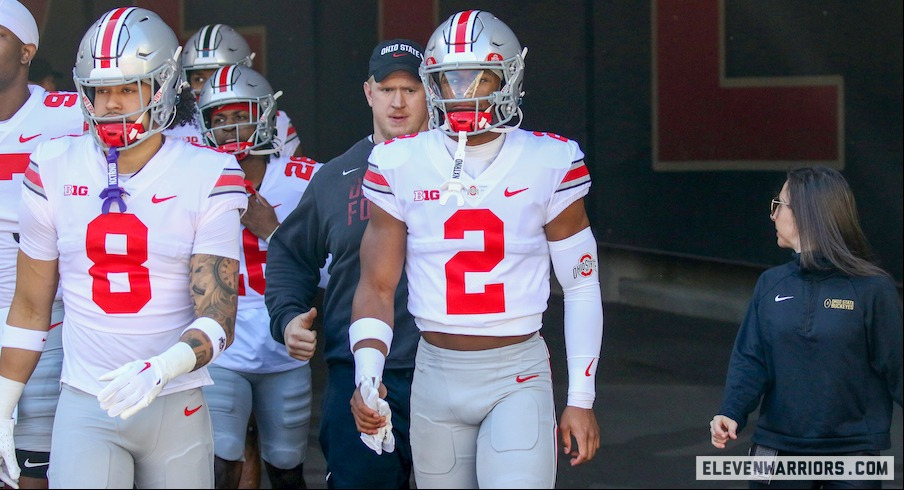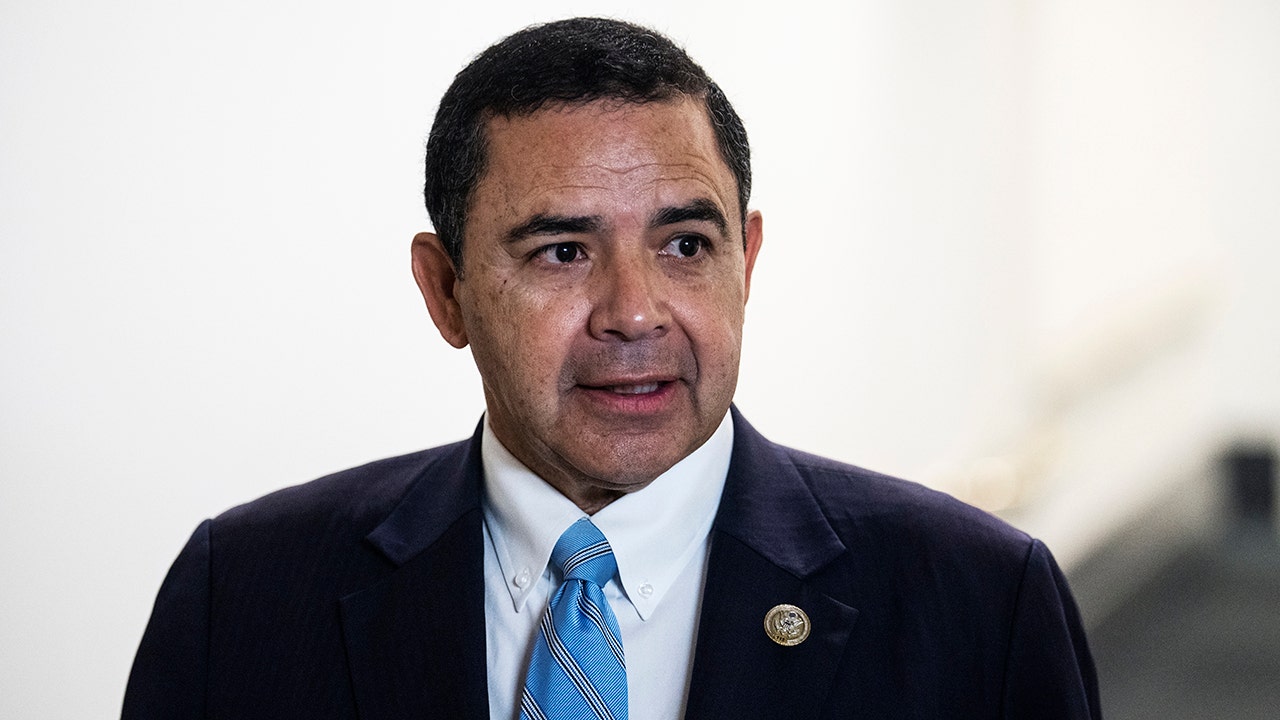Ohio
When coal plants operate at a loss, Ohioans have to pay. Now, some want a refund

Ohio electric customers don’t just pay for the electricity they use: They are also charged subsidies to keep power plants in business.
In 2020, for instance, they paid more than $100 million to subsidize two unprofitable coal plants.
The Citizens Utility Board of Ohio is arguing a case to the Public Utilities Commission of Ohio that those customers deserve a refund from the owners of those plants, the Ohio Valley Electric Corporation.
WOSU’s Renee Fox has been reporting on this issue, and joined The Ohio Newsroom to discuss the details.
This conversation has been edited for brevity and clarity.
On the Citizens Utility Board of Ohio’s case
“They’re teamed up with the Ohio Consumers Council and the Manufacturers Association of Ohio. They’ve had experts study these plants and their operations, and they’re saying that the way that these coal plants were run was unprofitable, but they didn’t have to be unprofitable. [They’re saying] that the plants could have shut down when the market prices weren’t good for coal-fired plants and saved everyone some money by doing that, but instead they ran them 24/7, whether or not the market was going to pay a good price for the energy produced during that time.
On the Ohio Valley Electric Corporation’s response
“Well, they say that the way they run the plants doesn’t matter that the way Ohio laws are written, that they can collect these subsidies, no matter if they were selling their energy at a profit or at a loss.
On how HB 6 factors in
“The reason these OVEC subsidies were put into House Bill 6 was because a few different energy companies heard how First Energy was benefiting with this nuclear bailout, and they kind of wanted a piece of that pie.
So companies like AEP lobbied to get these subsidies put into HB 6. Then when the scandal involved in House Bill 6 was revealed to the state and Larry Householder was indicted and later convicted, the subsidies for the nuclear power plants were rolled back. These subsidies were not. These were left in place.”
On what’s next
“Well, they’re waiting for the Public Utilities Commission of Ohio to make a decision on whether or not all of this $100 million from 2020 should go back to consumers, or maybe some of it, or none of it.
They do have to make a decision. They are reviewing this. This case has been active for a long time, since 2021. So things do seem like they’re coming to a conclusion sometime soon. But when I asked about that last month, they said it wasn’t on their agenda yet to make a ruling.
Then also, there’s some bills in the works that could roll these subsidies back, just like the nuclear subsidies were [eliminated]. But those bills haven’t really moved, and they’re becoming less and less likely to become law.”

Ohio
What do protesters at Miami University want? What has the university said? What to know
Israel-Hamas war: Protests held at Ohio State over conflict in Gaza
Several student and community groups attended a demonstration at Ohio State University Wednesday evening to protest the ongoing Israel-Hamas war in Gaza.
Over the past week, universities across the nation have been at the center of pro-Palestine protests in which students have organized marches and encampments to demonstrate solidarity for an end to Israel’s war in Gaza.
In Ohio, protests have been reported at Ohio State University, Case Western Reserve University and most recently, Miami University in Oxford. The protest began Thursday evening with a march and concluded with an encampment at the University Seal, located right in the heart of campus outside of Roudebush Hall.
Here’s everything we know about the protest as of Friday evening:
Are protests allowed at Miami University?
Students are allowed to protest and march in outdoor areas of the campus. However, protests cannot disrupt teaching, research or previously scheduled events.
Are non-students protesting?
Miami University Students for Justice in Palestine, a student group that describes itself on social media as connected to the university, organized the pro-Palestine march and encampment. They were also joined by the university’s chapter of the Young Democratic Socialists of America, according to a statement from the university.
According to university rules, non-students can only demonstrate on campus perimeter sidewalks designated by Miami, and have to comply with the same rule as staff and students.
What are the protesters demanding?
According to a statement from the Students For Justice in Palestine, the protest is to demand that Miami University disclose and divest its funds from companies involved in the “perpetuation of this genocide.”
More specifically, they want the university to stop investing in companies that do business with Israel.
“Miami students are joining together in solidarity to demand our university to disclose and divest its funds from the extremist Israeli genocide of Palestinians,” the statement reads.
The student group met with Miami University President Gregory Crawford on Wednesday, a day before Thursday’s protest, to present their demands of disclosure and divestment. However, their efforts were mostly unsuccessful, according to the statement from Student for Justice in Palestine.
What has the university said?
Shortly after the protesters had set up the encampment Thursday, Miami University issued a statement:
“The safety of our students is Miami University’s top priority, and that priority will guide university actions in this unfolding situation. Students for Justice for Palestine, a student organization, held a march this evening (May 2), and were joined by the Young Democratic Socialists of America. As with any demonstration, university staff have been present to maintain student safety and ensure that university policy is followed. Unfortunately, participants have chosen not to follow university policy. Those present have been informed that they are currently violating policy and must come into compliance.”
A number of protesters stayed at the encampment overnight and some are still there as of Friday afternoon.
The university issued a second statement Friday, saying the student organizations that set up the unauthorized encampment have since come into compliance with the university’s policy.
“Encampments create the need to provide continuous safety and security resources, which can divert these important resources away from the rest of our community,” the statement reads. “They can interfere with students’ ability to attend classes and prepare for finals and can strain the resources and facilities of the buildings located nearby. We continue to prioritize providing support and care for all of our students. Throughout this year, members of our student life staff have been in regular contact with students and student organizations discussing their concerns and supporting their well-being. We will continue to do so.”
What can’t protesters do?
Protesters are not allowed to use amplified sound, create temporary structures or leave behind literature. Miami also imposes safety measures, such as restrictions on campfires and outdoor camping.
Can Miami University have protesters arrested?
Demonstrations that block traffic or pedestrians, prevent access to a building or space, prevent a space from being used for its intended purpose or disrupt school activities could lead to an arrest, Miami’s website states.
Was there any opposition to the protest?
Enquirer media partner Fox19 reported that a group of Jewish students gathered across from the encampment in opposition. As of Friday evening, there were no reported clashes between any of the opposing groups.
Hillel, a Jewish student group at Miami University, said in a statement on social media that it is aware of the protest and is continuing to provide support to Jewish students.
“We are hopeful that the protest will be peaceful and that Miami affiliates will eschew the antisemetic language and incidents that have happened on other campuses,” the statement reads. “Our top priority is the physical and emotional safety of our students − first, foremost, and always.”
“While students have a right to protest, they do not have a right to intimidate or threaten Jewish and Israeli students − their classmates, peers, and for some, fellow Jews − who may have different viewpoints,” Hillel added in their statement.
Ohio
Avery Gach commits to Michigan over Ohio State. Is OSU’s 2025 offensive line class in trouble?
Ohio State seemed to have an idea of what Avery Gach would become.
The Buckeyes offered Gach in the middle of his sophomore season at Groves High School in Birmingham, Michigan, when the 2025 offensive lineman held one offer: Toledo.
Ohio State was first, followed days later by Michigan, months later by Michigan State and Wisconsin, and nearly a year later by programs such as Georgia, Southern California, Oklahoma and Florida State.
“In my mind, (OSU offensive line coach Justin Frye) did a tremendous job of identifying a talent not because everyone else had identified him, which is what happened afterward,” said Groves offensive coordinator Matthew Turner. “But he took the first step to make the identification.”
Ohio State made Gach a priority. But on Friday, Ohio State finished on the outside looking in as the four-star, 6-foot-5, 290-pound tackle committed to Michigan.
“It’s 45 minutes from my house,” Gach said before his Michigan commitment. “They just came off a national champion win. They brought 18 guys to the combine, which no team has done. And my main goal is to go to the NFL … so that just shows that they can do it.”
Per 247Sports’ composite rankings, Gach is the second-best Michigan prospect in the 2025 class behind five-star quarterback and LSU commit Bryce Underwood. Gach is also ranked as the No. 236 player in the country.
Groves coach Brendan Flaherty said Ohio State made Gach feel he was a priority throughout his recruiting process, from impromptu school visits by OSU assistant coaches to a tandem visit with offensive line coach Justin Frye and head coach Ryan Day.
Through multiple camp, game-day and unofficial visits to campus, Gach, Flaherty said, saw firsthand Ohio State’s pitch of how the program would get him better and help him get to the NFL.
“He’s a down-to-earth guy,” Flaherty said of Frye. “Like he’s been open and honest with Avery from the get go. I think one of Justin’s first comments was like, ‘Hey, I’m part of the process. But this is a business. You shouldn’t make a decision on picking a school on just your position coach or one coach. There’s a lot of factors here. I’m going to take care of you. Here’s how I coach, here’s what I do.’ ”
Gach said Ohio State “took a chance” on him as his second offer and that the Buckeyes were always good to his family.
But to Gach, no school provided the relationship Sherrone Moore provided him, having recruited him initially as Michigan’s offensive line coach before filling Jim Harbaugh’s shoes as the team’s head coach.
“There’s not a school that has done that,” Gach said. “I don’t think there’s a head coach that I’ve built a relationship with as well as coach Moore.”
What’s next for Ohio State offensive line recruiting in 2025?
Ohio State has already started its 2025 offensive line class with a prospect it desperately needed to secure.
Carter Lowe, a Toledo four-star tackle and the No. 50 prospect in the country, committed to the Buckeyes over Michigan in February. Lowe said after the OSU spring game he feels “completely at home” with Ohio State.
Of Frye’s eight signees in the 2023 and 2024 classes, five have been from Ohio, including the state’s top option in 2023, Luke Montgomery.
When it comes to out-of-state signees under Frye, one has entered Ohio State as a top-200 prospect: Indiana 2024 four-star Ian Moore. Ohio State finished as finalists for five-star Kadyn Proctor (Alabama) and four-star Olaus Alinen (Alabama) in 2023 and five-star Brandon Baker (Texas) in 2024.
In 2025, with Lowe already in the fold, Frye and Ohio State find themselves in a similar situation.
Ohio State is a finalist for David Sanders Jr., a 6-6, 285-pound five-star offensive tackle out of Charlotte, North Carolina, who is the No. 2 prospect in the class.
Providence Day School coach Chad Grier said Sanders is an NFL shoe-in and already puts up testing numbers that “would have been exceptional at the NFL combine.”
Grier said Ohio State has “done a great job” recruiting Sanders.
“The program speaks for itself,” Grier said. “David knows that and surely knows the pedigree of the guys that have come out of there and the guys that coach Day has been a part of producing.”
But Ohio State is one of six finalists vying for Sanders’ services along with Alabama, Clemson, Georgia, South Carolina and Tennessee.
“It was no small feat to cut a list from 130 to six,” Grier said. “He left some really great programs and coaches he cared about off that list. But the final six were thoughtful and deliberate, and Ohio State earned the right to be on that stage with David.”
Sanders may be at the top of the list. But he’s not the Buckeyes’ only offensive line target in 2025. He’s joined by four-star Micah DeBose, four-star Douglas Utu and five-star Josh Petty, each of whom are top-100 linemen from outside of Ohio.
In the days leading up to Gach’s commitment to Michigan, Ohio State’s offensive line offer list grew to include Fort Worth, Texas, three-star Henry Fenuku and Roswell, Georgia’s Andrew Stargel, who is not ranked on 247Sports’ composite rankings but holds offers from Kentucky and Cincinnati.
Like Sanders, Ohio State was “on that stage” for Gach. The Buckeyes were there at the beginning, but came up short and will instead have to face him for the next three to four seasons.
Missing Gach is not the end-all, be-all of Ohio State’s 2025 offensive line recruiting class. But Gach is another miss on a list of highly-coveted misses, one that can only end with a highly-coveted out-of-state offensive line recruiting win.
Get more Ohio State football news by listening to our podcasts
cgay@dispatch.com
Ohio
How Ohio State’s 2024 Roster Stacks Up at Every Position Following the Transfer Portal Entry Deadline

Ohio State currently has 80 players on scholarship for the 2024 season, and it now knows that none of those players will transfer elsewhere this year.
The Buckeyes lost six players during the post-spring transfer portal entry window – running back Dallan Hayden, wide receiver Kyion Grayes, guard Enokk Vimahi, linebacker Nigel Glover and safeties Ja’Had Carter and Cedrick Hawkins – but kept the core intact of what they expect to be a championship-caliber roster.
Now five scholarships under the 85-man limit, Ohio State could still add a few players to its 2024 roster to bolster its depth. While the deadline to enter the portal has now passed, players already in the portal can still transfer to new schools. The Buckeyes have reportedly been in contact with Michigan State defensive tackle Derrick Harmon (per On3) as well as a trio of safeties: Michigan State’s Jaden Mangham and Sacramento State’s Cameron Broussard, per 247Sports, as well as Texas A&M transfer Jacoby Mathews. Offensive line has been seen as the top-priority position for a post-spring transfer addition, though there doesn’t appear to be a wealth of Ohio State-caliber linemen in the portal.
With that in mind, we take a look at how Ohio State’s roster stacks up following the year’s final portal entry deadline to assess the Buckeyes’ depth at each position and where they could potentially look to fill out the roster with another transfer addition.
The counts below only include scholarship players, though notable walk-ons who could potentially be candidates for any leftover scholarships are mentioned in the analysis below each position group.
Quarterbacks (5): Will Howard (R-Sr.), Devin Brown (R-So.), Lincoln Kienholz (R-Fr.), Julian Sayin (Fr.), Air Noland (Fr.)
While a starting quarterback still needs to emerge from this group, Ohio State has the luxury of tremendous quarterback depth. Ryan Day would be happy to have four scholarship quarterbacks, and it’s exceedingly rare for a team to have five scholarship quarterbacks in the transfer portal age.
There’s no shortage of talent throughout this group. Howard earned second-team All-Big 12 honors last year at Kansas State. Sayin, Brown and Noland were all top-60 overall prospects in their recruiting classes. Kienholz was USA TODAY’s boys’ high school athlete of the year in 2023. Howard remains the frontrunner to start this season, but they all have enough upside to start at Ohio State after choosing to stick around for at least this year.
Running Backs (4): TreVeyon Henderson (Sr.), Quinshon Judkins (Jr.), James Peoples (Fr.), Sam Williams-Dixon (Fr.)
Ohio State would probably like to have one more non-freshman running back on scholarship, but the top of the depth chart is loaded with Henderson and Judkins, who will split the vast majority of carries as long as both stay healthy. Peoples and Williams-Dixon both performed well this spring as early enrollees, and Day has expressed confidence that those two freshmen, as well as walk-on TC Caffey, can provide the depth the Buckeyes need at running back if they don’t add a transfer at the position.
“We’re looking for five, and I think we’re in a situation where we’ll be at five,” Day said in April after Hayden informed the coaching staff he would enter the portal. “If we need to add a sixth, then we’ll look into that. But right now, I think we’ll be in a situation where we feel comfortable with five guys.”
Wide Receivers (8): Emeka Egbuka (Sr.), Jayden Ballard (R-Jr.), Kojo Antwi (R-So.), Brandon Inniss (So.), Carnell Tate (So.), Bryson Rodgers (R-Fr.), Jeremiah Smith (Fr.), Mylan Graham (Fr.)
With Egbuka back to lead the way and Smith, Tate and Inniss all seen as being on the precipice of stardom, Ohio State’s wide receiver unit remains in great shape despite the departures of Marvin Harrison Jr., Julian Fleming and Xavier Johnson from last season.
The total number here is lower than Ohio State would like it to be – Day said a few years ago that 11 was the Buckeyes’ target number of scholarship receivers – but Brian Hartline has never been inclined to chase portal receivers. The Buckeyes have just enough depth that they don’t have to, with walk-ons David Adolph and Brennen Schramm looking the part of capable third-stringers with their performances in the spring game.
Tight Ends (6): Gee Scott Jr. (R-Sr.), Will Kacmarek (R-Jr.), Bennett Christian (R-So.), Jelani Thurman (R-Fr.), Max LeBlanc (Fr.), Damarion Witten (Fr.)
Like at quarterback, Ohio State doesn’t have a clear-cut starter at tight end – though Scott is the leader in the clubhouse – but has more than enough depth with Kacmarek, Thurman and Christian also candidates to be a part of the tight end rotation. In addition to the six tight ends on scholarship, Patrick Gurd returns to the unit after playing the most snaps of any walk-on last season (not including Johnson, who started his career as a walk-on but was placed on scholarship in 2021).
Given the surplus of depth at tight end, Witten could be a candidate to play wide receiver – at least temporarily – to balance out the numbers at the positions, as Witten has enough athleticism to play outside and will need to bulk up from his high school weight to play tight end collegiately.
Offensive Linemen (16): Josh Fryar (R-Sr.), Seth McLaughlin (R-Sr.), Donovan Jackson (Sr.), Josh Simmons (R-Jr.), Zen Michalski (R-Jr.), George Fitzpatrick (R-So.), Carson Hinzman (R-So.), Tegra Tshabola (R-So.), Luke Montgomery (So.), Joshua Padilla (R-Fr.), Austin Siereveld (R-Fr.), Miles Walker (R-Fr.), Deontae Armstrong (Fr.), Devontae Armstrong (Fr.), Ian Moore (Fr.), Gabe VanSickle (Fr.)
If the Buckeyes are going to add another starter via a post-spring transfer addition, it would be on the offensive line. Simmons (left tackle), Jackson (left guard), McLaughlin (center) and Fryar (right tackle) are all expected to be starters, but the right guard position remains wide open entering the summer.
From an overall numbers standpoint, the Buckeyes have as many scholarship offensive linemen as they need. If they can find a transfer offensive lineman who could either be an upgrade for the fifth starting spot or provide more reliability as a top backup, they shouldn’t hesitate to make an addition. If they’re unable to find such a player, three potential candidates to round out the starting lineup are Hinzman, Tshabola and Montgomery while Fitzpatrick, Michalski, Siereveld and Padilla will be the main contenders to round out the two-deep.
Defensive Ends (8): Jack Sawyer (Sr.), JT Tuimoloau (Sr.), Mitchell Melton (R-Sr.), Caden Curry (Jr.), Kenyatta Jackson (R-So.), Joshua Mickens (R-Fr.), Eddrick Houston (Fr.), Dominic Kirks (Fr.)
Led by a standout pair of returning starters in Sawyer and Tuimoloau, Ohio State’s defensive end depth chart is strong from top to bottom.
Curry, Jackson and Melton give the Buckeyes a deep rotation of veteran edge defenders with playing experience. Houston, Mickens and Kirks give Ohio State promising developmental rushers for the future, with the five-star Houston being the most likely candidate among those three to push for playing time alongside the veterans in 2024.
Defensive Tackles (8): Ty Hamilton (R-Sr.), Tyleik Williams (Sr.), Tywone Malone (R-Jr.), Hero Kanu (R-So.), Kayden McDonald (So.), Jason Moore (R-Fr.), Will Smith Jr. (R-Fr.), Eric Mensah (Fr.)
Just like at defensive end, Ohio State sits at its target number of eight scholarship players at defensive tackle with a healthy mix of veterans and youth.
Williams and Hamilton form a strong starting tandem, while Kanu, McDonald and Moore are among the younger defensive tackles who have flashed between limited action last season and this spring. Hamilton and Williams are the only returning defensive tackles who have seen considerable playing time, which gives the Buckeyes reason to consider adding another veteran like Harmon, but Ohio State will still have a well-built roster of interior defensive linemen if it doesn’t add anyone.
Linebackers (8): Cody Simon (R-Sr.), Kourt Williams (R-Sr.), C.J. Hicks (Jr.), Sonny Styles (Jr.), Gabe Powers (R-So.), Arvell Reese (So.), Payton Pierce (Fr.), Garrett Stover (Fr.)
Ohio State courted a couple of linebackers during the first transfer window of the offseason, but the Buckeyes have less need for one now that Styles is a full-time linebacker. At a position where only two to three players have seen regular playing time in Jim Knowles’ first two years as defensive coordinator, eight scholarship linebackers is enough for the Buckeyes to have healthy depth.
That’s contingent on the availability of Pierce and Williams, who were both sidelined this spring by injuries, but it’s likely that most if not all of the snaps this year will be played by some combination of Simon, Hicks, Styles, Reese and Powers. Walk-on Joey Velazquez is also a legitimate depth option and candidate to play special teams as a former scholarship player at Michigan.
Cornerbacks (9): Denzel Burke (Sr.), Jordan Hancock (Sr.), Lorenzo Styles Jr. (R-Jr.), Davison Igbinosun (Jr.), Jermaine Mathews Jr. (So.), Calvin Simpson-Hunt (R-Fr.), Aaron Scott Jr. (Fr.), Bryce West (Fr.), Miles Lockhart (Fr.)
You won’t find many better depth charts at any position in college football than Ohio State’s cornerback depth chart. The Buckeyes couldn’t have drawn it up much better than it’s currently constructed.
Burke, Igbinosun and Hancock give the Buckeyes an excellent trio of returning starters. Mathews might be the best backup cornerback in the country, and the Buckeyes are high on Simpson-Hunt and Styles’ ability to contribute off the bench, too. Scott, West and Lockhart give Ohio State a talented trio of freshmen to provide third-team depth this year while developing for the future.
Jordan Hancock, Denzel Burke and Davison Igbinosun lead the nation’s best cornerback depth chart.
Safeties (6): Lathan Ransom (Sr.), Caleb Downs (So.), Malik Hartford (So.), Jayden Bonsu (R-Fr.), Jaylen McClain (Fr.), Leroy Roker (Fr.)
Ohio State already added the best player in the transfer portal in Downs, who will team with Ransom to form an excellent tandem of starting safeties. In terms of sheer numbers, however, safety is the position where Ohio State most needs to add another transfer – and could even add two transfers – for depth purposes. Ideally, the Buckeyes would like to have at least eight safeties on scholarship; with only six, they’re an injury or two away from being in a precarious spot.
As things currently stand, the Buckeyes have just three safeties with any playing experience at the collegiate level in Downs, Ransom and Hartford. That said, Bonsu and McClain both performed well in extended reps this spring, while walk-on Inky Jones has also demonstrated the potential to be a quality depth player despite his lack of a scholarship.
Specialists (2): LS John Ferlmann (R-Jr.), P Nick McLarty (Fr.)
Ohio State addressed its lack of punting depth with the late addition to the 2024 recruiting class of McLarty, who will compete with fellow Australian Joe McGuire – a walk-on – for the starting punting job when he enrolls at OSU this summer. Ohio State will also supplement its long-snapping depth this summer with the arrival of incoming freshman walk-on Morrow Evans, the top-ranked long snapper in the 2024 class, though he’ll start out his career backing up Ferlmann.
Assuming the Buckeyes don’t add five more transfers, Jayden Fielding would be a logical candidate to receive one of Ohio State’s five open scholarships as he enters his second season as the Buckeyes’ starting kicker.
-

 News1 week ago
News1 week agoLarry Webb’s deathbed confession solves 2000 cold case murder of Susan and Natasha Carter, 10, whose remains were found hours after he died
-

 News1 week ago
News1 week agoFirst cargo ship passes through new channel since Baltimore bridge collapse
-

 World1 week ago
World1 week agoHaiti Prime Minister Ariel Henry resigns, transitional council takes power
-

 World1 week ago
World1 week agoSpanish PM Pedro Sanchez suspends public duties to 'reflect'
-

 World1 week ago
World1 week agoUS secretly sent long-range ATACMS weapons to Ukraine
-

 Movie Reviews1 week ago
Movie Reviews1 week agoHumane (2024) – Movie Review
-

 News1 week ago
News1 week agoAmerican Airlines passenger alleges discrimination over use of first-class restroom
-

 Education1 week ago
Education1 week agoVideo: Johnson Condemns Pro-Palestinian Protests at Columbia University















